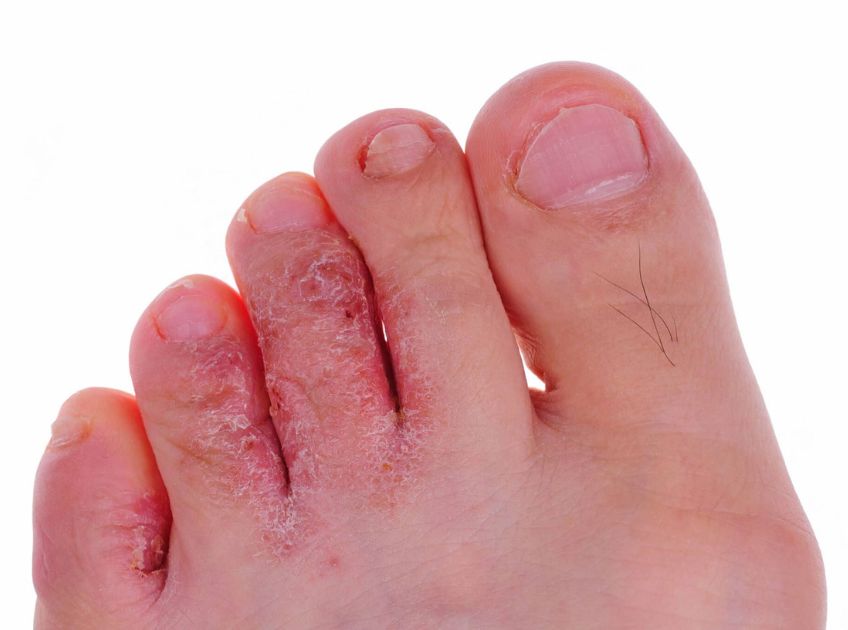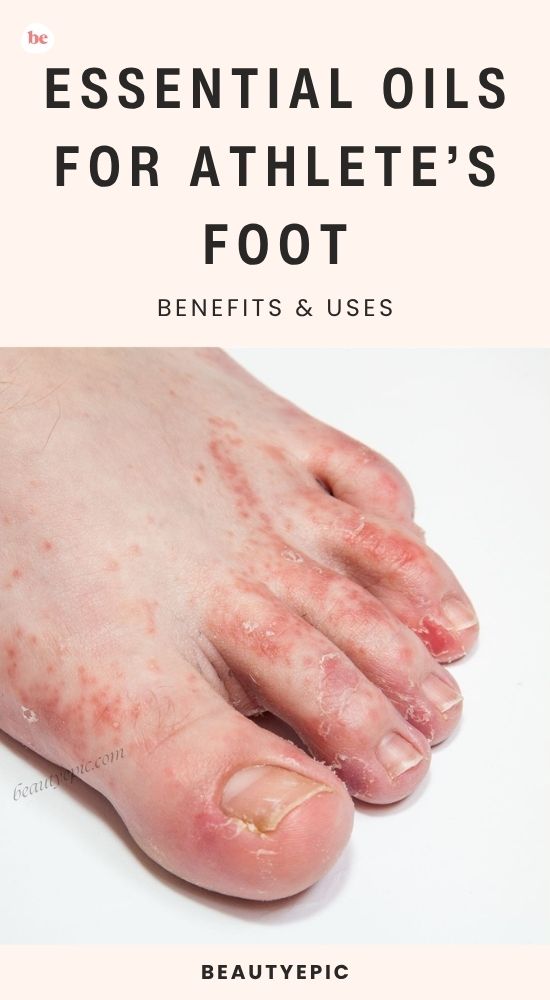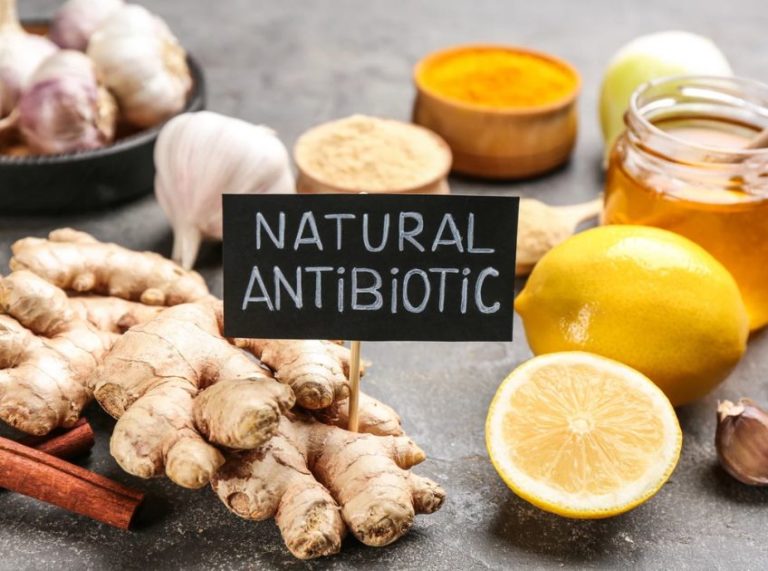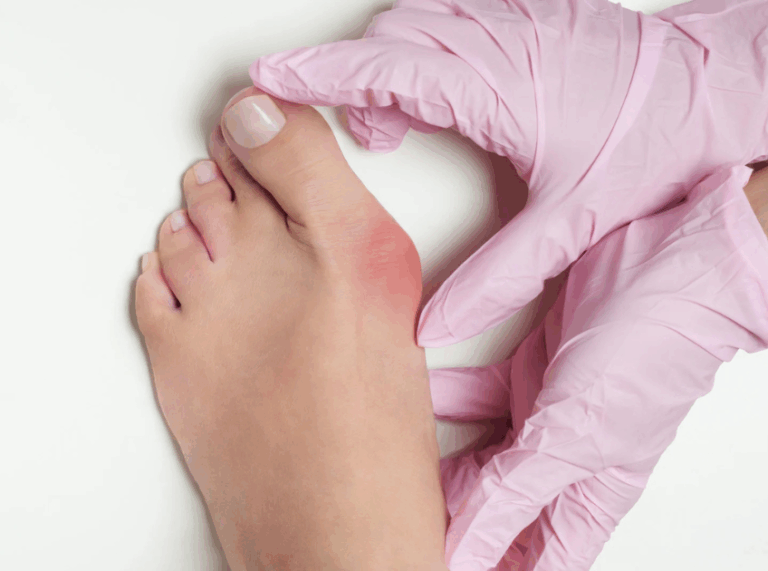
Important: This article is for informational purposes only. Please read our full disclaimer for more details.
Athlete’s foot (tinea pedis) is a common fungal infection that affects the skin on the feet, causing itching, burning, redness, and sometimes cracking. While antifungal creams are often recommended, many people turn to natural remedies like essential oils for relief. Essential oils are concentrated plant extracts known for their antifungal, antimicrobial, and soothing properties. When used correctly, they can help ease symptoms, fight fungal growth, and prevent recurrence.
Article Contains
- Tea Tree Oil – The Gold Standard for Athlete’s Foot
- Lavender Oil – Gentle Yet Powerful Antifungal
- Eucalyptus Oil – Cooling Relief and Fungus Fighter
- Peppermint Oil – Instant Cooling Comfort
- Oregano Oil – The Heavy Hitter Against Fungus
- Clove Oil – Antifungal and Pain-Relieving
- Lemongrass Oil – Antifungal and Deodorizing
7 Essential Oils That Can Help Fight Athlete’s Foot
1. Tea Tree Oil – The Gold Standard for Athlete’s Foot
How to Use:
- Add 2–3 drops to 1 tsp of coconut oil and apply to affected areas twice daily.
- For a stronger treatment, add 5 drops to a basin of warm water and soak feet for 15 minutes.
Benefits:
- Potent antifungal properties fight dermatophytes, the fungi responsible for athlete’s foot.
- Reduces itching, burning, and redness.
- Helps prevent secondary bacterial infections.
Side Effects:
- It can cause irritation or dryness when used undiluted.
Tip: Use tea tree oil consistently for at least 2–3 weeks to see improvement.
Study Insight: A 2002 randomized trial (Australasian Journal of Dermatology) found that tea tree oil improved symptoms in patients with athlete’s foot more than a placebo (1).
2. Lavender Oil – Gentle Yet Powerful Antifungal
How to Use:
- Mix 3 drops with a carrier oil and massage into clean, dry feet.
- Add 5 drops to a warm foot bath for relaxation and healing.
Benefits:
- Fights fungal growth while soothing inflamed skin.
- Calming aroma reduces stress, which can indirectly support skin healing.
Side Effects:
- Rare, but may trigger allergic reactions in sensitive skin.
Tip: Apply before bedtime to allow overnight absorption and calming benefits.
Study Insight: A study in Medical Mycology showed lavender essential oil inhibited the growth of dermatophytes (2).
3. Eucalyptus Oil – Cooling Relief and Fungus Fighter
How to Use:
- Add 5 drops to warm water and soak feet for 10–15 minutes.
- Or mix 2 drops with carrier oil and apply to skin twice daily.
Benefits:
- Provides cooling relief from burning and itching.
- Acts as an antifungal and antibacterial agent.
Side Effects:
- May cause mild stinging or allergic reaction in sensitive skin.
Tip: Works especially well as a foot soak for sweaty feet.
Study Insight: A 2010 review highlighted eucalyptus oil’s antimicrobial and antifungal potential (3).
4. Peppermint Oil – Instant Cooling Comfort
How to Use:
- Dilute 2 drops with coconut oil and massage into affected areas.
- For odor control, add 3 drops to a warm foot bath.
Benefits:
- Provides instant cooling relief from itching.
- Mild antifungal and deodorizing properties.
Side Effects:
- It can cause a burning sensation if not diluted properly.
- Not recommended for children under 6.
Tip: Use after workouts to keep feet fresh and prevent fungal spread.
Study Insight: Research shows peppermint oil has antifungal activity, though weaker than tea tree oil (4).
5. Oregano Oil – The Heavy Hitter Against Fungus
How to Use:
- Mix 1 drop of oregano oil with 1 tsp carrier oil and apply directly to fungal patches once daily.
Benefits:
- Contains carvacrol and thymol, powerful antifungal compounds.
- Prevents fungal growth and may speed healing.
Side Effects:
- Very strong—can cause redness, irritation, or burning.
- Never use undiluted.
Tip: Use sparingly and alternate with gentler oils like lavender.
Study Insight: A 2001 study in Molecular and Cellular Biochemistry confirmed oregano oil’s strong antifungal activity (5).
6. Clove Oil – Antifungal and Pain-Relieving
How to Use:
- Dilute 2 drops with carrier oil and apply to affected areas twice daily.
Benefits:
- Antifungal properties fight fungal spores.
- Natural anesthetic effect reduces itching and pain.
Side Effects:
- Strong oil that may sting on sensitive skin.
- Avoid high concentrations.
Tip: Combine with coconut oil (which is mildly antifungal) for maximum effect.
Study Insight: Eugenol, the main component of clove oil, has demonstrated antifungal activity in multiple studies (6).
7. Lemongrass Oil – Antifungal and Deodorizing
How to Use:
- Add 4–5 drops to a warm foot soak or dilute with a carrier oil for direct application.
Benefits:
- Strong antifungal and antibacterial action.
- Refreshes and reduces foot odor.
Side Effects:
- May cause dryness or sensitivity in people with eczema or dry skin.
Tip: Great for those who wear closed shoes for long hours, as it prevents odor and fungal buildup.
Study Insight: Laboratory studies confirm lemongrass oil’s ability to inhibit fungal growth (7).
Frequently Asked Questions (FAQ’S)
1. Can essential oils cure athlete’s foot completely?
A. They can help manage symptoms and reduce fungal growth, but severe cases may still require medical antifungal creams.
2. How long does it take to see results?
A. With consistent use, mild cases may improve in 1–3 weeks. Persistent infections may take longer.
3. Do I need to dilute essential oils before applying?
A. Yes—essential oils are very concentrated and must always be mixed with a carrier oil to avoid skin irritation.
Final Thoughts
Essential oils like tea tree, lavender, and oregano can provide natural relief from athlete’s foot while supporting healthy skin. They offer antifungal, soothing, and anti-inflammatory benefits, but consistency and proper dilution are key. For best results, combine essential oils with good foot hygiene—keep your feet dry, wear breathable shoes, and wash socks regularly. If symptoms persist, consult a dermatologist for stronger antifungal treatments.
















